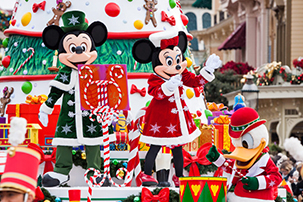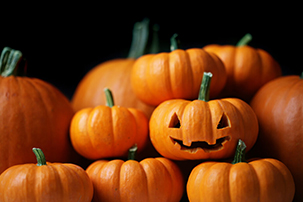Have you ever marveled at an outdoor inflatable—its unique shape, vibrant colors, and enormous size? Have you ever wondered how these majestic structures are created? We’ve got you covered!
In this blog, we’ll dive deeply into making outdoor inflatables—from the blueprints to the finished piece. So get ready to learn—let’s blow up some knowledge!
Introduction to Outdoor Inflatables
Outdoor inflatables, such as bounce houses and water slides, provide hours of entertainment for both adults and children. But have you ever stopped to wonder how these inflatables are made? Let’s look at the process that is used to manufacture outdoor inflatables.
The first step in the manufacturing process of outdoor inflatables is the development of a design. Manufacturers use specialized software to create a digital representation of what they envision the outdoor inflatable to look like when it is complete. After designing, manufacturers take measurements and create patterns for cutting and sewing the fabric.
Regarding fabric selection, manufacturers generally prefer vinyl or nylon construction. These materials can withstand varying temperatures and frequent exposure to wind, rain and sun for prolonged periods with minimal wear and tear. Once the fabric has been selected, manufacturers begin constructing the seams with industrial-grade machines that use triple stitching for added durability. Reinforced stress points are also included for increased safety during operation.
At this point in production, details such as logos and decorations can also be applied digitally or through silk screening processes. Inflation components (e.g., blowers or pumps) may also be added depending on safety regulations by country/region. Outdoor inflatables are typically inflated using fan-powered units which blow air through tubes connected along its seams that can be adjusted manually or through remote control devices. Once the unit is inflated, it undergoes a quality control review before being packaged up/shipped out to vendors or customers alike!
Types of Outdoor Inflatables
Outdoor inflatables, such as jumpers, bouncers, water slides, obstacle courses, and more can come in a variety of sizes, styles, and forms. Depending on your needs, the features of each kind can vary widely and includes:
- Bounce Houses: Bounce houses offer a fun way to play in yards, events or parties. These types of inflatables often come with an enclosed bouncing bed with netting along the walls to ensure safety and separate kids from each other while they play.
- Inflatable Slides: These large outdoor pieces are typically found at events and parties for children who want the thrill of a large slide without having to travel far. The sides are usually open or have some type of netting around them to keep children safe from falling out when sliding down.
- Water Slides: Inflatable slides also come as water slides for added excitement. Popular with summertime getaways, water slides usually have either a built-in water trough at the bottom that users slide into or large aquatic pools at the end for guests to splash into after their big ride down the tube.
Materials Used for Outdoor Inflatables
Outdoor inflatables are made using a variety of materials, including vinyl, nylon, and oxford cloth. The most common of these is vinyl since it is lightweight, yet strong and durable. Vinyl is also resistant to fading from the sun and mildew from moisture. Different categories of vinyl can be used for different inflatables with heavier duty fabrics being used for large and/or commercial-grade inflatables.
Nylon is another popular material for outdoor inflatables as it is naturally waterproof without lamination like vinyl needs, which makes it great for items like water slides. Nylon requires that its seams are sealed, however; they can always be double-stitched or taped to prevent any leakage.
Oxford cloth is the thickest fabric of all three but also the heaviest; often used on large scale commercial inflatables like amusement park rides or giant water slides. Oxford Cloth provides superior protection against tearing and snags and a highly durable product that lasts a long time even with high-traffic use. It too must be sealed around seams to prevent moisture leakage, but overall offers greater durability than other inflatable fabrics on the market.
Inflatable Manufacturing Process
Inflatables are outdoor products that are designed for fun, such as bounce houses, water slides, inflatable obstacle courses, and more. The challenge with designing a strong and durable chunk of rubber that holds up to wear and tear from the elements is no small feat. It requires special consideration of design and manufacturing processes to get it just right.
The manufacturing process for making an outdoor inflatable begins with a careful analysis of the customer’s product design requirements. After the specifications have been submitted, the manufacturers consult safety regulations for each intended location to determine material requirements for strength and weather resistence. Calendars are consulted to predict usage patterns in order to calculate anticipated wear-and-tear factors. All this information combined ensures that the right materials and components are used through out the product’s construction lifecycle.
Once all relevant information is collected, raw materials can be sourced safely in large batches when possible to reduce costs associated with overhead expenses such as labour and shipping fees. Cutting equipment is used on high grade heavy duty vinyl which follows CAD drawings intended by design engineering staff or provided by customers during ordering phases.
The pieces are stitched either manually or via automated stitching machines before having any seams welded together creating one large piece of inflatable fabric ready for use in constructing any type of desired product be it a medium sized run’n’jump to an adventurous blow up water park feature! Some items may require powerful blowers to pump air into them for inflation purposes; these may be purchased separately or sourced in bulk depending upon customer demand due additional costs associated with logistics related purchasing protocols required by governmental safety laws regarding electrical appliances distribution policies per market/region etc..
Finally, knowing finish times are immensely important within inflatables industry so rush orders can be taken without bumping production cycles associated with other larger order commitments from other customers who like wise waited along periods of time while waiting their turn at putting fulfilling their own dreams into reality – dreams manifesting inside a perfectly produced piece of outdoor inflatable fun!
Quality Control for Outdoor Inflatables
Quality control is an essential part of ensuring that all outdoor inflatables, including obstacles courses, water slides, bounce houses, slip n’ slides and other structures are safe for use. Quality control begins with selecting the right material for each product. This can include a variety of fabrics such as vinyl or nylon depending on what is necessary to create the desired structure. Quality control measures then examine the production process to make sure that seams are properly reinforced, fabric is dyed correctly and accessories like blowers or lighting systems meet industry standards.
The experienced guidance of a design engineer also plays a crucial role in meeting quality standards. Design engineers have expertise when it comes to determining the best methods for creating durable inflated structures that can withstand regular inflation and deflation cycles and exposure to wear from repeated use by people of various ages and weights. Working in tandem with an outside safety certifier helps guarantee that the product has met all safety requirements before being approved for sale or rental to customers.
Finally, after construction is complete, it’s important to check that all items operated outdoors meet safety codes defined by regulatory bodies such as ASTM in order to ensure they are delivered free from potential hazards like fire risks, electrical shock or drowning risk etc. Since inflatable structures often require continued attention during use (like proper anchoring when being operated near water), operators must also be provided with clear instructions on how these items should be operated safely in order to prevent injury or damage.
Benefits of Outdoor Inflatables
Outdoor inflatables are a popular and affordable option for creating temporary outdoor displays. They come in a range of shapes, sizes, and materials to accommodate any budget or size area. Inflatables require no permanent installation and can be erected for special events or for semi-permanent installations.
Inflatables are ideal for outdoor advertising, displays, parties, retail promotions, and trade shows. Benefits of using outdoor inflatables include:
- Easy set up – Manufactured with durable materials that hold air well and easy to use construction that sets up quickly
- Portable – Inflatable structures are lightweight and easy to transport making them ideal for promotional or on-site events.
- Customizable – Many providers offer custom designs that convey a unique message or branding opportunity.
- Cost effective – Lower cost than traditional signage or building structures making them an attractive option for a range of budgets.
- Durable – Outdoor inflatables typically have strong seams and fabrics to withstand wind speeds between 8–10 mph (miles per hour).
- Safe – Certified by industry standards such as the European Union toy standard EN71 parts 1 & 2 to make sure they are safe for all users.
Maintenance of Outdoor Inflatables
Once your outdoor inflatable is installed, regular maintenance is essential to ensure that it works effectively and continues to look attractive. Before beginning any work, inspect the inflatable thoroughly to check for wrinkles, worn or ripped seams, weakened material and poor inflation.
For regular cleaning of the surface material:
- Check the manufacturer’s instructions for the correct cleaning procedure
- Use a damp cloth or soft brush to clean off dirt and debris
- Allow sufficient time for drying
Direct sunlight can damage an outdoor inflatable so it’s important to monitor UV exposure and shade accordingly. If you anticipate exposure to direct sunlight for extended periods of time, consider purchasing a cover (or cover tarp) specifically designed for this purpose. Additionally, use of a high-grade waterproofing agent will keep your inflatable well protected from harsh weather conditions.
For proper inflation of the air chamber:
- Check that all valves are securely closed before you start
- Inflate until the desired shape is achieved
- Equally distribute air throughout all chambers
- Ensure that no ground objects are underneath during inflation/deflation
- Carefully monitor pressure throughout use – revisit as needed
Regular maintenance of an outdoor inflatable will help preserve its durability over time. Remember to regularly check for wear, repair any tears or weak areas when needed and keep on top of general décor upkeep like covering when necessary and wiping down with a damp cloth or soft brush when possible. With regular care your outdoor inflatable will remain in great condition!
Conclusion
After being sewn, the inflatables are inspected for quality purposes and then sent to a testing area. Here the products will be inflated by an air compressor or a hand pump, depending on their size, in order to make sure they are safe and reliable products. Once the inflatables have cleared testing, they are packaged for delivery or storage according to their customer’s specific needs.
Outdoor inflatable play equipment can provide hours of fun and entertainment for everyone, no matter what their age may be. By understanding how outdoor inflatables are made, you can understand how they work and how to maintain them correctly. With proper care and maintenance, your outdoor inflatables can last you many years of exciting playtime adventures!






